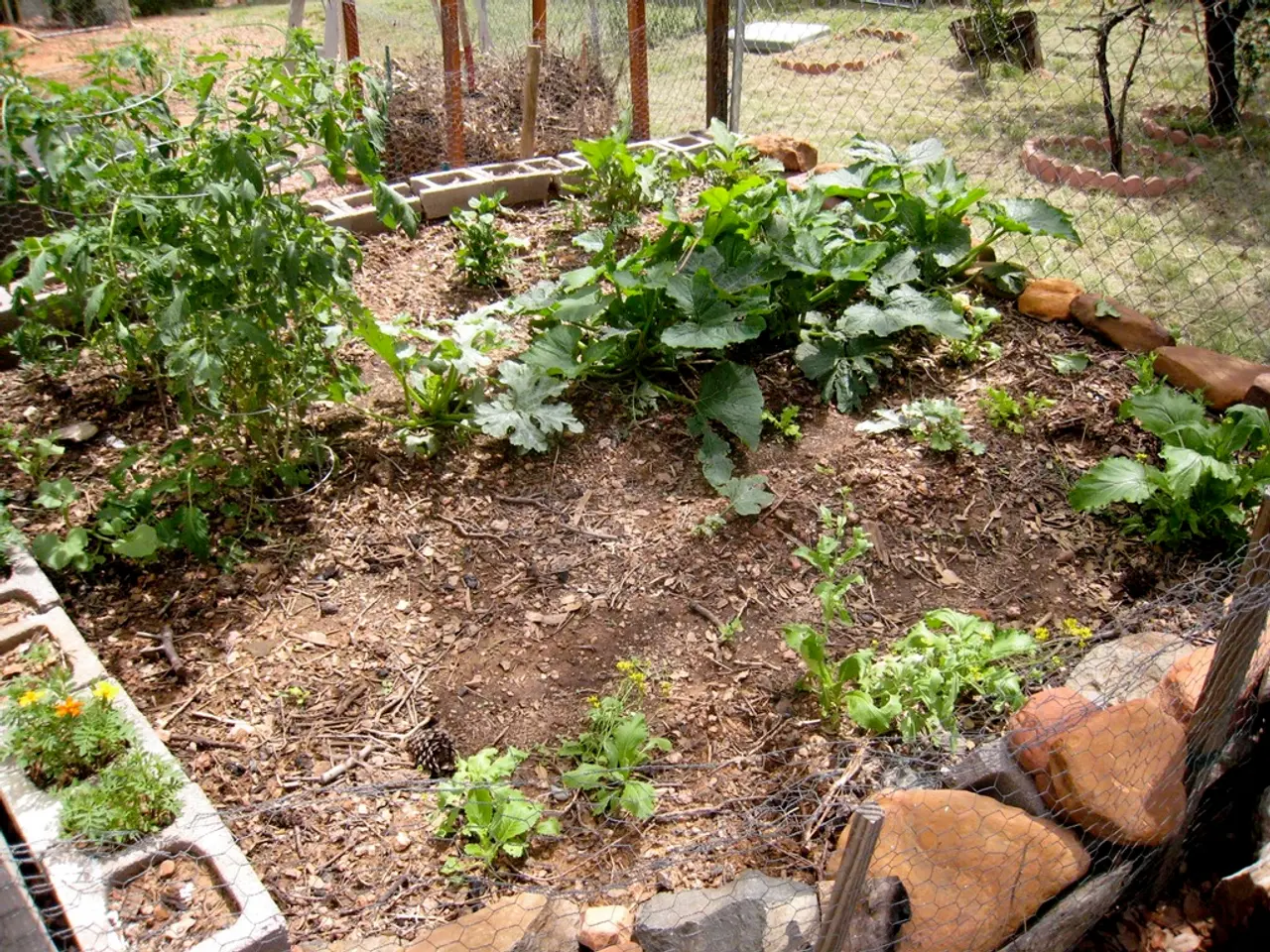Guide to Ideal Soil Composition for Plant Growth: The Optimal Balance of Nature's Elements
In the world of horticulture, choosing the right soil for your plants is crucial. Two common types of soil that gardeners often find themselves comparing are potting soil and garden soil (or topsoil). While they may seem similar, these two soils have distinct differences that significantly impact plant growth.
Potting soil, designed for growing plants in containers, is a man-made blend of materials such as peat moss, coconut coir, perlite, vermiculite, compost, sand, lime, and starter fertilizers. Its light, fluffy, and porous texture allows for excellent drainage, preventing root rot and sogginess, which is vital for healthy root development in container-bound plants that rely solely on the provided medium for nutrients and moisture.
On the other hand, garden soil, intended for in-ground planting, is a natural soil from the ground, sometimes enriched with compost or organic matter. Its dense and heavy texture compacts over time, resulting in slower drainage. This makes it better suited for open garden beds where roots can spread and excess water can dissipate naturally. Using garden soil in pots risks poor drainage, compacted roots, and heavy pots that stunt growth.
The nutrient content of the two soils also varies. Potting soil usually contains a balanced mix of nutrients and amendments tailored to container plants' needs, whereas garden soil often requires amendment with compost or fertilizers to support robust plant growth. Some gardeners blend garden soil with potting soil to moderate heat and moisture conditions, especially in hot climates, which can help keep roots cooler and reduce watering frequency in containers.
Soil gnats can be harmful to plants, and understanding their relationship with plants is essential. To improve poor drainage in soil, organic materials like compost, manure, mulch, or cover crops can be added. Rice hulls can be used as mulch to control weeds and retain soil moisture, while also improving plant strength and resistance to pests and diseases. Soil additives like worm castings, basalt, kelp meal, and neem cake can replenish nutrients, improve soil composition, and enhance organic matter content, aeration, and drainage.
Rice hulls are a versatile and sustainable choice for gardeners, as they have a neutral pH, which is vital for nutrient uptake, and eventually break down to add beneficial silica to the soil. Alfalfa meal, another soil enhancer, is a nitrogen-rich material in a granulated form that adds organic matter to the soil, improving fertility and water retention, and encourages lush green foliage and rapid growth.
When it comes to testing soil drainage, a simple method is to dig a 6-inch deep by 3-inch wide hole in the ground, fill it with water, and time how long it takes for the water to drain. Well-drained soil is essential for healthy plant growth, with a balance of larger and smaller particles, allowing water and nutrients to reach the plant's roots without causing waterlogging or drought conditions.
In summary, choosing between potting soil and garden soil should be based on the planting method and environment. Using potting soil in containers maximises aeration, moisture retention without waterlogging, and nutrient availability—critical for container-grown plants. Meanwhile, garden soil or enriched topsoil is better for outdoor beds where plants have space to thrive and soil structure supports natural drainage and root expansion. Misusing one for the other's purpose—such as using heavy garden soil in pots—can lead to poor drainage, root compaction, and impaired plant growth.
Indoor plants, with their reliance on controlled environments and provided media for growth, particularly benefit from the light, fluffy, and porous texture of potting soil, which allows for excellent drainage, preventing root rot and promoting healthy root development. On the contrary, home-and-garden lifestyle enthusiasts should avoid using garden soil in pots, as its dense and heavy texture can lead to poor drainage, compacted roots, and heavy pots that stunt growth.



